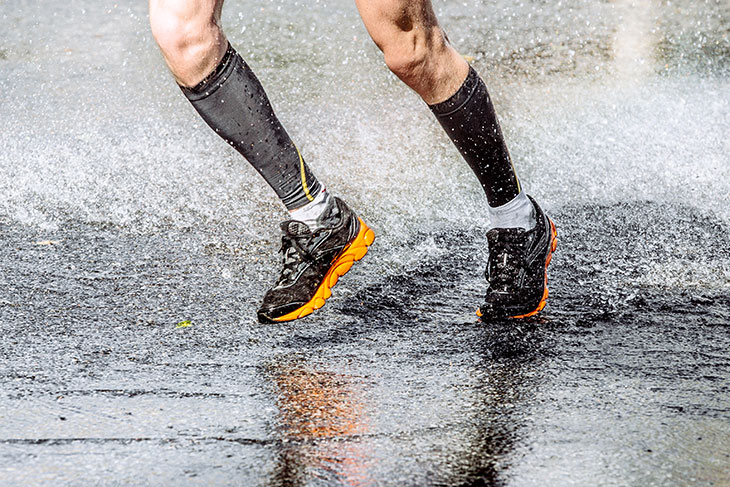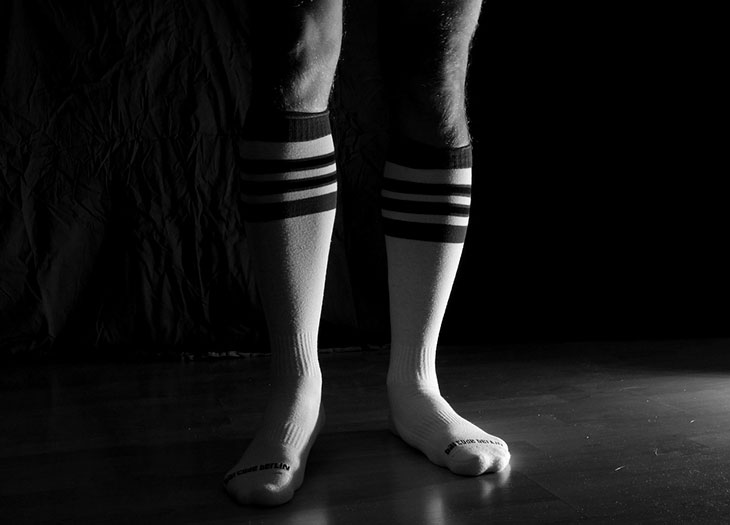
Compression socks work by promoting healthy blood circulation from your extremities to your heart. Medical-grade compression socks, in particular, are mostly used to prevent blood clots in the legs of patients with circulatory problems or people recovering from surgery. Over the years, however, more and more people are recognizing the many health benefits of compression socks, such as easing joint and leg pain, treating varicose veins, and promoting joint and muscle recovery.
HEALTH
Today, people can now wear mild or medium compression socks that are appropriate for exercise and everyday use. These provide the same blood circulation benefits but with milder compression. Moreover, it’s easy to find men’s compression socks in many clothing and apparel stores. As such, it’s become common to see men and women wearing compression socks while running, playing sports, or simply going for a walk.
Though many people use compression socks, one common complaint about them is that they feel too tight. This may be because these socks are designed to be snug, so it might take a while for most individuals to get used to wearing them. That being said, some compression socks may truly be too tight for some people, and this can cause all sorts of unwanted health problems.
So how does one know if their compression socks are too tight? Here are several important indicators to watch out for:
When You Feel Pain in Your Feet, Ankles, Knees, or Legs
While compression socks are snug enough to provide adequate pressure to joints and muscles, they shouldn’t be so tight that they cause a lot of discomfort or pain. When this happens, you likely need compression socks that come in a bigger size. It may also indicate that the compression level of your socks is too high for your legs. If your medical-grade compression socks are too tight, you should notify your doctor so that they can retake your leg measurements. With this information, they can have the right size compression socks made for you.
When you wear your compression socks, pay attention to any pain you might feel in your legs and joints. If you sense any pain, try to pinpoint its location so that you can address it accordingly. For example, pain behind your knees might mean the compression socks are bunching up in that specific area. This could be caused by not wearing your compression socks properly or not having the right size socks. If your toes hurt, you might need compression socks that are wider around your toes, or you may need open-toed compression socks to relieve the pressure around the area.

When Your Compression Socks Pinch Your Skin and Leave Red Marks
Before you decide that your compression socks are too tight, consider what happens to your skin when you wear regular socks. Even regular socks that aren’t too tight can leave harmless marks on your skin. Fortunately, these marks usually fade after a few minutes. If you’ve only started wearing your compression socks recently, you may be experiencing the same thing. In most cases, it’s nothing to worry about.
But if you’ve been wearing your compression socks regularly and notice that the top bands of your socks leave a sore red mark on your calf or thighs, then your compression socks might be too tight. Should this be the case, you’ll want to stop wearing them and buy a pair in a bigger size to avoid irritating your skin or cutting off your blood circulation.
When Your Legs and Feet Start Feeling Numb
Another sign that your compression socks are too tight is when your legs and feet start feeling numb. You might also feel a tingling sensation and some discomfort the longer you wear them. The numbness is typically caused by reduced blood circulation in your legs, which is the exact opposite of what proper compression socks should do. If this is the case, stop wearing them and get the appropriate size of compression socks.
Additional Tip: Be Mindful of Your Socks’ Compression Levels If You Have Senile Purpura
Senile purpura is a condition that is common among elderly adults. It is characterized by easily getting bruised when the skin encounters minor bumps or pressure from any object. Tiny blood vessels under their skin bleed and break, leaving purplish-red bruises on the affected area.
While senile purpura is usually not serious, it’s important to get compression socks with the right level of compression for this condition. If their compression socks are too tight, elderly adults will experience a lot of bruising. Fortunately, slightly reducing the compression levels of the socks will help to avoid further bruising.
To reap any health benefits from compression socks, it’s important to get the right size and compression level for your legs. So whenever you’re buying a pair, be sure to check if they fit you well. Take note of the signs we mentioned above to know if your compression socks are too tight.
RELATED: The Best De-Aging Tips Out There



